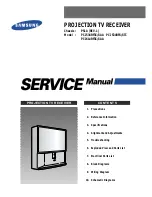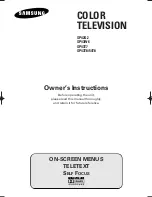
IED 670
IED 670
IED 670
Switch
ZoneA Trip
ZoneB Trip
Ext ZoneA Trip
Ext ZoneB Trip
Ext ZoneA Trip
Ext ZoneB Trip
50 ms
50 ms
50 ms
t
50 ms
IE
C
6
1
85
0
P
or
t (
O
E
M
)
IE
C
6
1
85
0
P
or
t (
O
E
M
)
en06000227.vsd
S
am
e
G
O
O
S
E
f
ro
m
IE
D
#
3
to
w
a
rd
s
IE
D
#
1
a
n
d
IE
D
#
2
S
am
e
G
O
O
S
E
fr
om
I
E
D
#
2
to
w
ar
d
s
IE
D
#
1
a
nd
I
E
D
#
3
IE
C
6
18
5
0
P
o
rt
(
O
E
M
)
GOOSE for ZoneA
GOOSE for ZoneB
IEC06000227 V1 EN-US
Figure 52: Principal trip arrangement via GOOSE between three one-phase IEDs
M12117-4 v4
Centralized trip unit
Tripping is performed directly from the IED contacts, which then activate an auxiliary trip unit,
which multiplies the number of required trip contacts. Separate potential free contacts are
provided for each bay and are supplied by the bay auxiliary voltage and will activate the trip
coil of each bay circuit breaker at operation. This tripping setup is suitable when no individual
circuit breaker failure IEDs or lock-out of individual bay CB closing coils is required. A suitable
external trip unit consists of a combination of RXMS1/RXMH 2 when heavy duty contacts are
required and only RXMS 1 relays when medium duty contacts are sufficient.
M12118-4 v4
Decentralized trip arrangement
Tripping is performed directly from the IED contacts, which then activate dedicated auxiliary
trip unit per bay. This individual auxiliary trip unit can be mounted either in the busbar
protection cubicle or in the individual bay cubicles. This tripping setup is suitable when
individual circuit breaker failure relays exist in all bays. A suitable external trip unit consists of
a combination of RXMS1/RXMH 2 when heavy duty contacts are required and only RXMS 1
relays when medium duty contacts are sufficient.
This solution is especially suitable for the station arrangements, which require the dynamic
zone selection logic (that is, so called CT switching).
6.1.3.10
Mechanical lock-out function
M12119-3 v1
M12119-4 v3
It is sometimes required to use lock-out relays for busbar protection operation.
The IED has built-in feature to provide either self-reset or latched tripping in case of busbar
protection operation. Which type of trip signal each zone will issue is determined by a
parameter setting
DiffTripOut which can be set either to SelfReset or Latched. When Latched
is selected the trip output from the IED will only reset if:
1MRK 505 370-UEN D
Section 6
Differential protection
Busbar protection REB670
111
Application manual
Summary of Contents for REB670 Series
Page 1: ...Relion 670 SERIES Busbar protection REB670 Version 2 2 IEC Application manual ...
Page 2: ......
Page 22: ...16 ...
Page 64: ...58 ...
Page 226: ...220 ...
Page 244: ...238 ...
Page 358: ...352 ...
Page 392: ...386 ...
Page 398: ...392 ...
Page 436: ...430 ...
Page 454: ...448 ...
Page 466: ...460 ...
Page 474: ...468 ...
Page 475: ...469 ...
















































